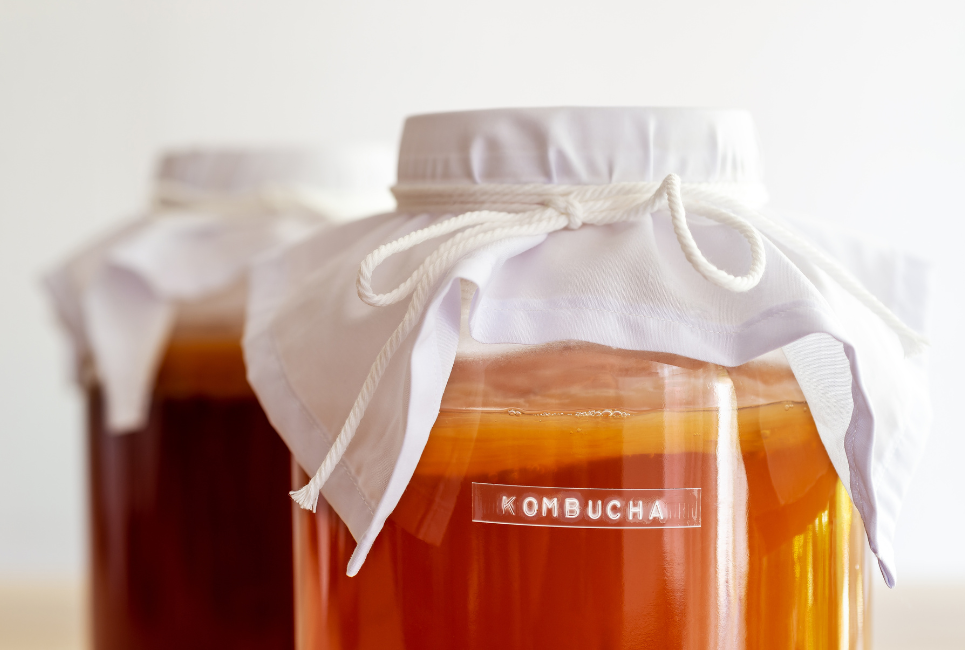Which is better for you – kombucha or kvass? Both of these drinks have probiotic benefits, but they also have some key differences. Let’s take a closer look at each one to see which might provide you with more benefits.
What Is Kombucha, And What Is Kvass
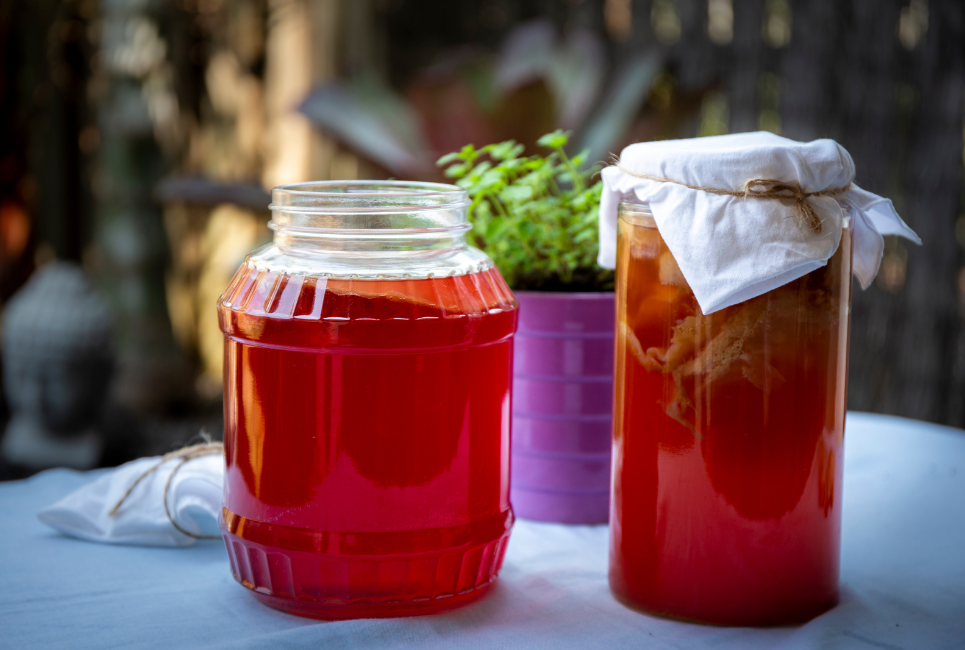
Kombucha is a probiotic-rich fermented drink that has been around for centuries. There is no scientific evidence pointing out where exactly kombucha comes from; however, it is thought to have originated in China. Kombucha is made by fermenting sweetened tea using a symbiotic colony of bacteria and yeast (SCOBY).
The SCOBY feeds on the sugar in the tea, and as it does so, it produces enzymes and acids that give kombucha its sour and natural fizzy taste. This fermentation process produces beneficial probiotics, enzymes, and acids that can positively impact gut health.
Kombucha became popular in the West in the 1990s and has continued to grow in popularity in recent years.
Kvass (sometimes spelled kvas) is a traditional Eastern European fermented drink made from black or rye bread. Kvass originates from the ancient state of Kyivan Rus’ (Modern-day Ukraine) and is one of the oldest known Slavic drinks. It was mentioned in the Primary Chronicle, a 12th-century document that describes the history of the early Slavic people.
It has a slightly yeasty and sour flavor and low alcohol content. Kvass has been consumed in Eastern Europe for centuries and was once considered a healthy alternative to soft drinks. Today, kvass is still popular in Ukraine, Russia, and Poland, and can be found in many Eastern European supermarkets.
Kvass is becoming more popular in the United States as people become more interested in fermented foods and drinks. While traditional rye bread kvass is popular in Europe, in the United States, kvass is mainly known because of beet kvass, a popular beet brine drink made of lacto fermented beet juice.
Probiotic drinks are becoming increasingly popular due to their range of health benefits. Kombucha and kvass are two probiotic drinks that have gained a lot of popularity in recent years. But what exactly are these drinks, and how do they differ from each other?
How Are They Different
Both drinks have health benefits and can boost your immune system, but there are some key differences between the two.
Kombucha is made with sweetened black or green tea, while kvass is made with rye bread, white bread, or beetroot. This means that kombucha is slightly sweeter than kvass. Additionally, kombucha typically has a higher acidity level than kvass.
Kombucha also contains a variety of live bacteria and yeast, while kvass contains just a single strain of live yeast. This means that kombucha is thought to be more beneficial for gut health than kvass.
Finally, kombucha is typically carbonated, while kvass is not. This gives kombucha a slightly fizzy texture, while kvass is more like a flat beer.
Related reading: Kefir vs. Kombucha: Which Is Healther?
Kombucha and Its Variations

The basic kombucha is made by mixing sweetened black tea, sugar, and a SCOBY together in a jar. The SCOBY will eat the sugar and create carbon dioxide, beneficial acids, and a small amount of alcohol. After about two weeks, the kombucha is strained out and is ready to drink.
Kombucha can be brewed by using ginger, strawberry, and blueberry. Ginger is a great source of antioxidants and can help to improve circulation. Strawberry and blueberry are both rich in vitamins and minerals and can help boost the immune system. Different berries and other ingredients can be combined together to make kombucha with a unique taste and properties.
Kvass and Its Variations
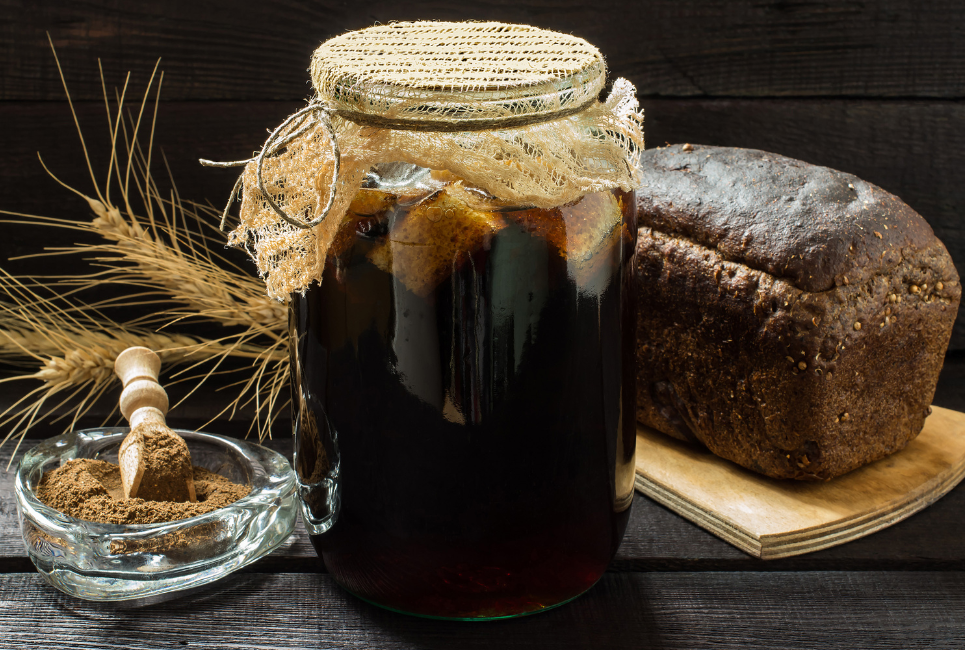
There are different types of kvass recipes, some of which are quite simple while others require a bit more effort. Kvass is generally made by fermenting bread or other starchy foods in water. This fermentation process gives kvass its characteristic distinctly sour taste and effervescent quality.
Some commercialized kvass products are made with fruit juices or extracts, but many traditional kvass recipes emphasize that true kvass requires nothing more than bread, water, and a starter culture of yeast and bacteria. Kvass can also be made at home using a simple fermentation process, so you can brew and drink your very own kvass!
Rye Bread Kvass
This is the most popular and well-known type of kvas, made with dark sourdough rye bread, also referred to as the “black bread.” It has a deep brown color and rich flavor. This traditional recipe for kvass uses rye bread as the primary ingredient.
Bread Kvass
This is lighter-colored kvass made with regular white bread. It is often flavored with fruits or herbs for a refreshing summertime drink. This fermented beverage is an excellent thirst quencher!
Beet Kvass
Kvass can also be made with organic beets, resulting in reddish-colored kvass with a sweet flavor. Beet kvass is a lacto fermented beverage, meaning that it’s made with the help of beneficial bacteria. The Lactobacillus converts the sugars in the beets into lactic acid, which gives kvass its slightly sour and tangy taste.
Folk medicine values beets because of their medical properties. Beetroot contains amino acids such as betaines, increasing red blood cell production, and making it an excellent blood tonic.
Beet kvass is a refreshing, slightly tart fermented drink that is rich in probiotics and other nutrients. It’s easy to make at home and is a great way to get your daily dose of probiotics. Hence, you can get more benefits by drinking beet kvass rather than just drinking water.
Beet kvass can be enjoyed on its own or used as a base for cocktails. It’s also a popular ingredient in Russian cuisine and in Ukrainian dishes, including soups and stews. Kvass is a versatile drink that can be enjoyed in many different ways.
What Are the Benefits Of Fermented Drinks?
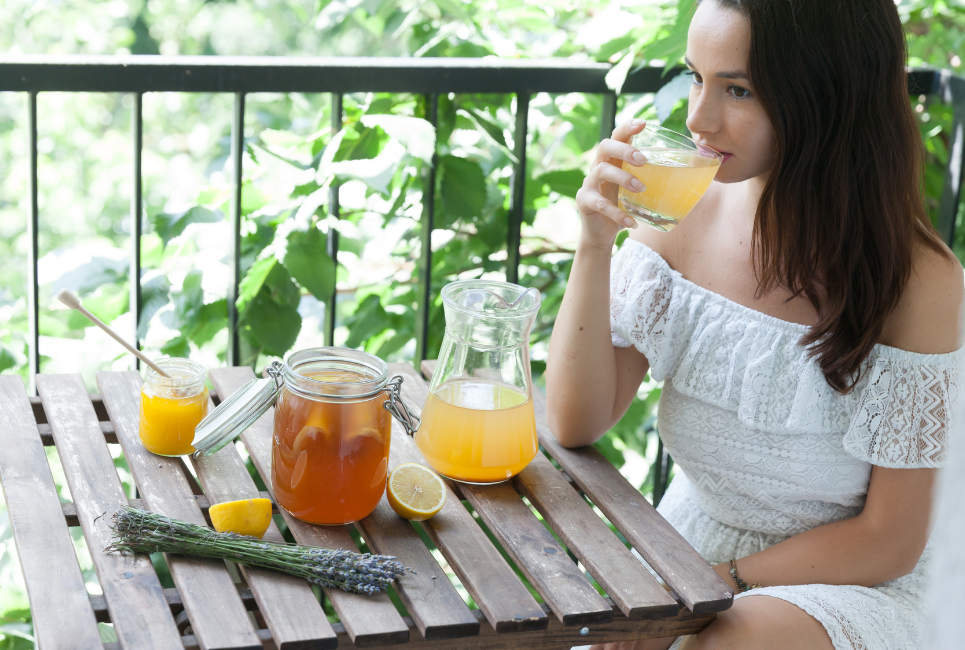
They Are Refreshing!
If you need a refreshing drink, try kombucha or kvass. They are perfect for a hot summer day or after a workout.
Antioxidative Properties
Fermented drinks are rich in antioxidants, which can help to protect cells from damage and may even help to prevent some chronic diseases.
Gut-Friendly
As mentioned earlier, kombucha and kvass are both gut-friendly drinks. They contain beneficial bacteria contributing to a healthy gut.
The beet version of kvass has liver cleansing properties and is reported to be effective for treating chronic fatigue syndrome.
Reduce Inflammation
Studies have shown that kombucha can help to reduce inflammation. This is thought to be due to the presence of glucaric acid, an anti-inflammatory compound.
Boost Energy Levels
Kombucha and kvass can both help to boost energy levels. This is thought to be due to the presence of B vitamins essential for energy production. Kombucha is also a good source of iron, which is needed for red blood cell production.
Which Fermented Drink Is Better for You
Kombucha or kvass? It depends on your preferences. If you like the taste of vinegar, kombucha is probably the drink for you. If you prefer something sweeter, kvass might be a better option. Both drinks have similar health benefits, so it really comes down to personal preference.
No matter which drinks you choose, fermented drinks are a great way to improve your health. They are refreshing, full of antioxidants, and gut-friendly. So, go ahead and give them a try!
How To Make Your Own Kombucha Or Kvass
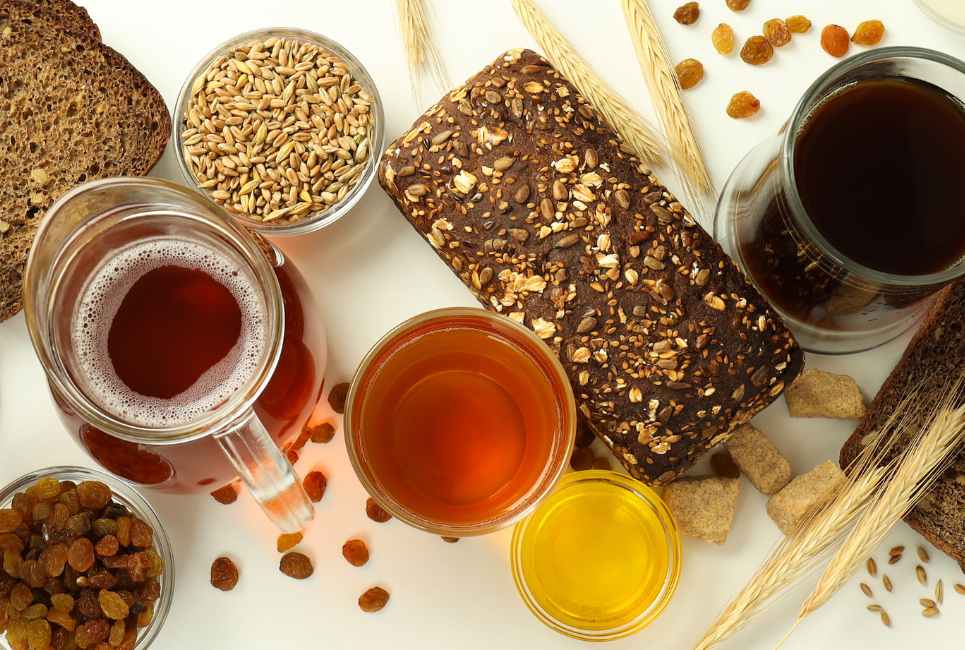
If you want to try making your own kombucha or kvass, it’s easy to do at home. You can find recipes online or in specialty cooking books. The basic ingredients you will need are water, sugar, and a starter culture of bacteria and yeast.
You can use any type of sugar for kombucha or kvass, but raw sugar or honey is best. You will also need black tea for kombucha and either rye bread or beets for kvass.
Basic Kombucha Recipe
If you’re interested in making your own kombucha, there are a few things you need to know. First, you’ll need to purchase a SCOBY (symbiotic culture of bacteria and yeast). This can be purchased online or from a health food store. You’ll also need to get some good-quality black tea and sugar.
Ingredients
- 1 SCOBY
- 1 cup of sugar
- 8 bags of black tea
- 3 1/2 quarts or 6 cups of water
Instructions
- In a large pot, bring 3 1/2 quarts (1.5 liters) of water to a boil. Add 1/2cup (100g) of sugar and stir until dissolved. Add 8 tea bags and let steep for 5 minutes. Remove the tea bags and let the mixture cool to room temperature.
- Add 2 cups of sweet tea, and stir again. Pour everything inside the jar and put the SCOBY inside. Cover the jar with a coffee filter or cloth secured with a rubber band.
- Let the kombucha ferment at room temperature for 7-10 days, checking on it occasionally to make sure the SCOBY is still floating.
- After 7-10 days, taste the kombucha. Let it ferment for a few more days if it is too sweet for your liking.
- Once the desired level of sweetness is achieved, transfer the kombucha to bottles or a jar with a tight-fitting lid. Store in the fridge for up to 2 weeks.
You can also infuse your kombucha with different berries and fruits. Just put them inside, wait for 2-3 days, and your fruit-infused kombucha is ready!
Enjoy your homemade kombucha!
Basic Kvass Recipe
As you already know, kvass is a little different from kombucha, as it is based on rye bread or beets instead of tea. Hence, the process of making kvass consists of different steps. Check out the homemade kvass recipe below to find out how to make kvass at home.
Ingredients
- 1 lb rye toasted bread (make sure it doesn’t contain any food additives)
- 1 cup of sugar
- 3 liters of water
- Optional: 1/2 tablespoon of yeast (for fizzier kvass)
Instructions
- Tear the bread into small pieces, or cut it into 8-9 slices, and place in a large bowl. Add the sugar, then pour it into the water. Mix well.
- If using yeast, dissolve in a bit of the kvass mixture, then add to the bowl. Stir well.
- Use a cheesecloth or clean towel to cover the bowl and let sit at room temperature for 2-7 days, stirring and tasting it once every 1-2 days.
- Strain the kvass through a fine-mesh strainer or cheesecloth into a pitcher or jar. Discard the solids.
- Enjoy your homemade kvass, or store it in the refrigerator for up to a week. Drink with ice, if desired.
Bottom Line
Kombucha and kvass are both gut-friendly drinks that can help to improve your health. They are full of beneficial bacteria, antioxidants, and vitamins. Kombucha is made with black tea and sugar, while kvass is made with rye bread or beets. Both drinks have similar health benefits, so it really comes down to personal preference. You can easily make your own kombucha or kvass at home with just a few simple ingredients. So, go ahead and give them a try!

